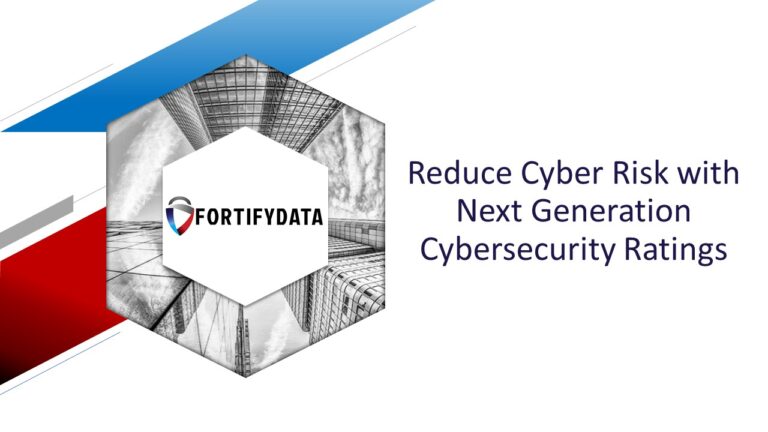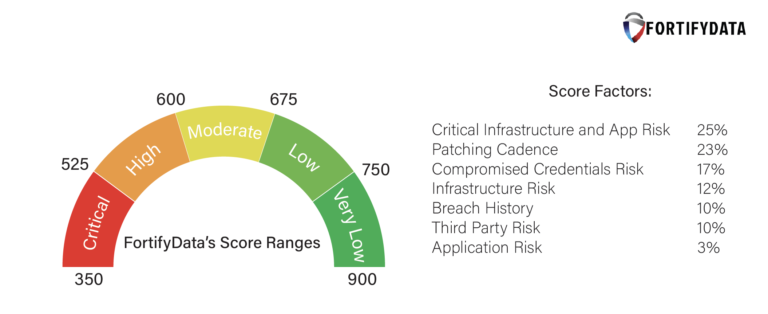
Webinar: Automating Cyber Risk Management Watch the On-Demand Webinar With increasing threats, challenging economic environments, budget limitations, and cyber…
"This is an excellent starting point for any organization that wants to get serious about their cyber risk management. The system has the capability to grow as you become more sophisticated in your use"
IT Director
Services Industry
Cybersecurity ratings offer a comprehensive view of an organization’s cyber health. But what if your position on the security rating scale isn’t favorable? Read on for actions you can take to enhance your security rating, with an exploration of the various types of security assessments.
The first step towards improvement is understanding. A security rating is a metric that gauges an organization’s cybersecurity health. The rating is based off a security rating scale, often visualized numerically or through grades, which offers insights into potential vulnerabilities and strengths. By pinpointing where your organization stands, you can tailor strategies to address specific weaknesses.
The next sections will go over actions your organization can take to help improve your security rating.
A robust cybersecurity strategy hinges on regular assessments. The mitigations and remediations you take based on the vulnerabilities and threats identified will help to improve a security rating. Here are some pivotal types of security assessments to integrate:
Additional Resources
Context based security ratings
Cybersecurity rating scale explained
What are security ratings used for?
How are security ratings created?
What is a good cybersecurity rating?
How do you improve your security rating?
Is it easy to switch security ratings providers?
Why is my security rating wrong?
What Kind of Company is BitSight?
Select What are the 5 C’s of Cybersecurity?
What is the Highest Security Rating?
What is the difference between SecurityScorecard and BitSight?
The Evolution of Cybersecurity Ratings and How They Can Boost Risk Visibility

Employees are the first line of defense. Equip them with the knowledge and tools to safeguard your digital assets:
Mistakes happen. If you believe your security rating doesn’t accurately reflect your cybersecurity posture:
Enhancing your cybersecurity rating isn’t just about addressing weaknesses but also about fortifying strengths:
Users of FortifyData benefit from a prioritized list of threats and vulnerabilities that we discover from our risk assessments. This lets your team know what to remediate first to provide the biggest impact to your security posture.
You can even test how remediating specific risks will impact your security rating with our Score Simulator. Then you can either create remediation tasks or export the ones you decide to remediate to a remediation plan.

Find out your score and what you can do to improve it!
With a proactive approach, regular assessments, and a commitment to continuous improvement, any organization can enhance its security rating. Remember, in the realm of cybersecurity, vigilance and proactive defense are the cornerstones of success.



| Cookie | Duration | Description |
|---|---|---|
| cookielawinfo-checkbox-analytics | 11 months | This cookie is set by GDPR Cookie Consent plugin. The cookie is used to store the user consent for the cookies in the category "Analytics". |
| cookielawinfo-checkbox-functional | 11 months | The cookie is set by GDPR cookie consent to record the user consent for the cookies in the category "Functional". |
| cookielawinfo-checkbox-necessary | 11 months | This cookie is set by GDPR Cookie Consent plugin. The cookies is used to store the user consent for the cookies in the category "Necessary". |
| cookielawinfo-checkbox-others | 11 months | This cookie is set by GDPR Cookie Consent plugin. The cookie is used to store the user consent for the cookies in the category "Other. |
| cookielawinfo-checkbox-performance | 11 months | This cookie is set by GDPR Cookie Consent plugin. The cookie is used to store the user consent for the cookies in the category "Performance". |
| viewed_cookie_policy | 11 months | The cookie is set by the GDPR Cookie Consent plugin and is used to store whether or not user has consented to the use of cookies. It does not store any personal data. |